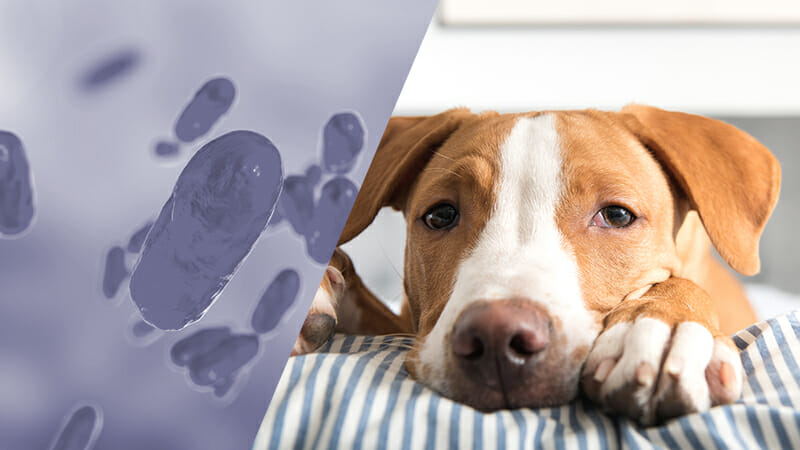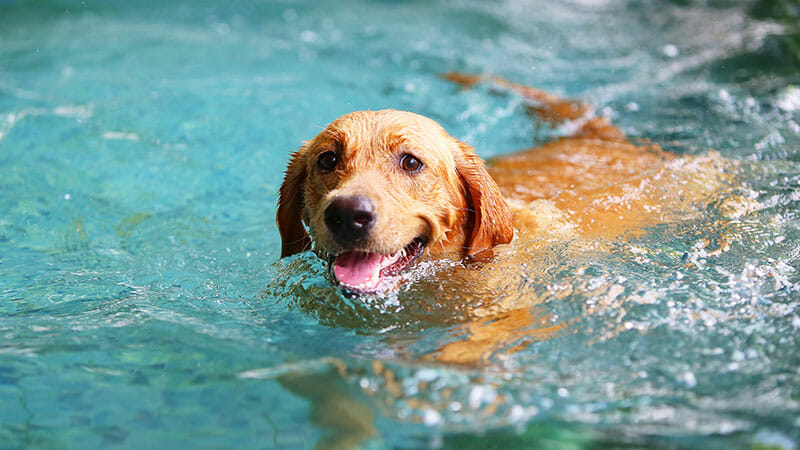Your Guide to Preventing Your Dog from Overheating
With the summer season well underway, Lucky Dog Bark & Brew shares some important tips about how to manage your dog’s outdoor time in the summer, including:
- Signs your dog is overheating
- How to prevent your pup from overheating
- What to do if your dog is overheated
Hotdogs belong in between a bun, not attached to the end of your leash. Keeping your furry friends from overheating during the summertime can be a challenge, but it’s important to monitor their temperature so they can remain healthy and happy all season. In this helpful guide, our team helps you identify the signs of overheating, provides detailed prevention tips, and offers guidance on what to do if your dog has started overheating.
Signs Your Dog is Overheating
Dogs don’t process heat in the same way that humans do. Unlike us, dogs aren’t able to sweat out their excess body heat effectively, forcing them to release heat through panting instead. As a result, it’s much easier for your pooch to become overheated. Fortunately, there are many signs pet owners can watch out for that will indicate their furry friend is struggling to stay cool. These include:
- Excessive drooling or panting
- Shortness of breath
- Bright or dark red coloring on gums or tongue
- Increased body temperature
- Elevated heart rate
- Increased thirst
- Collapse, stumbling, or disorientation
- Vomiting
How to Prevent Your Dog from Overheating
The key to keeping your best friend from overheating is early prevention. Below are just a few steps that pet owners can take to ensure the well-being of their pooches:
1. Limit Time Outside
Especially here in Charlotte, the summer season can get incredibly hot and humid. While it’s important that your dog get enough exercise to stay healthy, you may need to make some changes to your routine so your pup can acclimate to the increased temperature. If you do take your dog on long walks, consider changing your schedule to walk early in the morning or later at night when the temperature has gone down.
It may also be beneficial for you to explore seasonal exercise activities for your pet, such as swimming or running through the sprinkler. Not only is this great stimulation for highly active dogs, but it’s also a great source of relief for them — especially on sweltering southern summer days.
2. Keep Pets Hydrated
During the summer, your pet may need to drink more water to stay hydrated and comfortable. Make sure that any outdoor activities are closely followed by a water break for your furry friend. If you plan to be outside for a longer period of time, always carry a water bottle and portable dog bowl with you so they can remain hydrated and healthy.
3. Avoid Enclosed Spaces
One of the biggest things to avoid during the summer is leaving your dog in the car. Enclosed spaces like these are prone to higher temperatures, even if you park your vehicle in a shaded area. In fact, the inside of your car can reach temperatures as high as 113º F if the outdoor temperature is 70º F. Considering the average high in Charlotte during the summer is 88º F, it goes without saying that you should never leave your dog alone in the car for any period of time.
4. Monitor Your Dog
On days when your dog has spent more time outside or has found a sunny patch of floor to sprawl out on, it’s important to keep a closer eye on them. As we mentioned before, prevention is the key to keeping your furry friend from overheating. By staying aware of the signs of overheating, you’ll be able to act more quickly to remedy the problem if it does arise.
What to Do if Your Dog is Overheated
If you’ve started to recognize the signs that your dog is overheating, it’s important to act quickly to address the problem. Follow the steps below to speed up the recovery time for your overheated pooch:
- Step One: If you’re outside, get your pet inside to a cool location, such as in front of an air conditioner or a fan.
- Step Two: Place a cool, wet towel around your dog’s neck, armpits, or behind their hind legs. You can also gently wet their ears and paws with cool water.
- Step Three: Try to offer your dog a drink of fresh water without attempting to force her to do so.
- Step Four: If your pet has not started to show signs of improvement, reach out to your vet to request an emergency visit.
If your dog has collapsed or lost consciousness, do not hesitate to take them to an animal hospital right away. Heat stroke can be life-threatening if left untreated, so it’s best to act fast for the best possible outcome.




